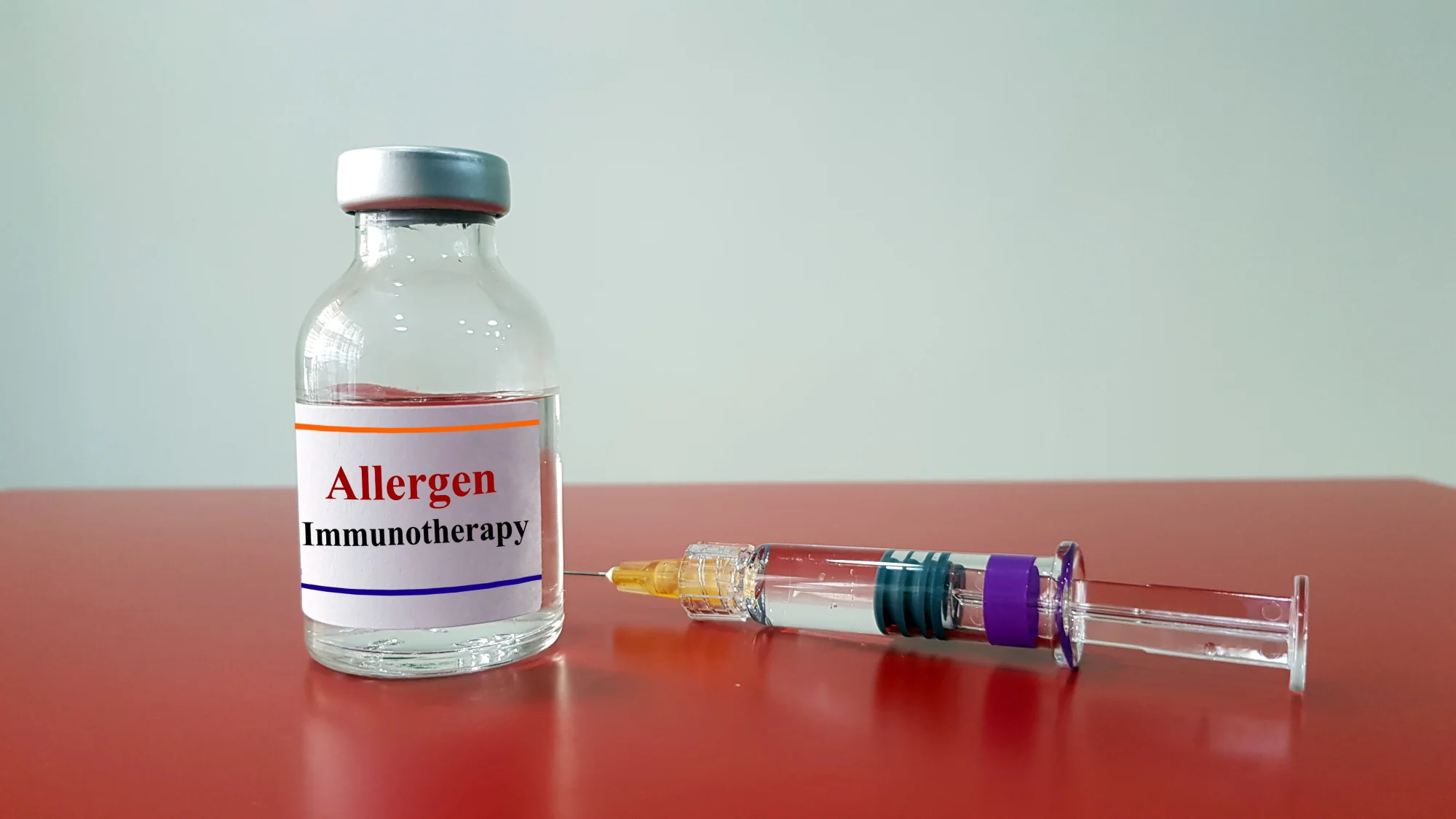
Immunotherapy doesn’t eliminate allergens. It reshapes how the immune system reacts to them. Allergens are given in small amounts. Over time, doses increase under supervision. This exposure occurs through injections or sublingual tablets. Each method follows a scheduled protocol. The goal is tolerance, not avoidance. The body learns not to overreact. Sensitivity decreases with repeated exposure. It’s a slow, measured process.
T cells shift their behavior through constant interaction with specific allergens
T cells help regulate immune reactions. In allergic individuals, these cells misidentify threats. Immunotherapy reprograms them over time. T helper 2 cells dominate allergic responses. Therapy encourages T regulatory cells instead. These cells promote tolerance and calm inflammation. This cellular shift reduces future allergic triggers. Without T cell adjustment, results won’t last. The therapy hinges on cellular education.
Histamine release lessens when immune memory adapts to new allergen patterns
Histamine causes many allergic symptoms. It’s released by mast cells after allergen exposure. Immunotherapy reduces this release. Repeated exposure leads to lower mast cell activity. Antibodies shift as tolerance grows. The allergic cascade becomes less severe. Over time, reactions diminish. Less histamine means fewer symptoms. Sneezing, itching, and swelling decrease naturally.
IgG4 antibodies increase as IgE activity gradually reduces across therapy cycles
IgE antibodies fuel allergic reactions. They activate mast cells and trigger inflammation. Immunotherapy decreases IgE levels over time. In contrast, IgG4 antibodies rise. IgG4 blocks allergen binding to IgE. It acts like a shield, preventing activation. This antibody shift supports immune tolerance. Fewer allergic responses occur. The system balances itself through these new antibody ratios.
Sublingual tablets deliver allergens directly into the bloodstream under the tongue
Not all therapies involve injections. Sublingual immunotherapy uses tablets or drops. These are placed under the tongue daily. The mucosal tissue absorbs allergens. This route bypasses the digestive system. Allergen uptake occurs gently. Over time, tolerance builds similarly to shots. It’s a home-based method, often safer. However, consistency is essential. Daily adherence ensures effectiveness.
Injections offer precise dosing but require ongoing clinical supervision
Allergy shots are the oldest form of immunotherapy. They involve regular clinic visits. Injections are given into the upper arm. Each dose increases gradually. The buildup phase lasts months. After that, maintenance injections follow. These may continue for years. Supervision ensures safety during each session. Anaphylaxis risk, though low, requires preparation. Clinics observe patients after each dose.
Maintenance phases stabilize immune responses and prolong desensitization effects
After reaching a target dose, therapy enters maintenance. Allergen doses stay constant here. The immune system adjusts slowly. Responses become less reactive. This phase supports long-term benefit. Sessions become less frequent. Monthly visits may be sufficient. Skipping this phase shortens the effect. Maintenance solidifies tolerance. It’s the final and essential step.
Immunotherapy works best when initiated early in allergy progression
Timing matters in allergic disease. Early treatment improves outcomes. Children respond faster than adults. Immune systems are more flexible in youth. Waiting delays results. Long-term allergy exposure deepens sensitivity. Starting early prevents worsening. Immunotherapy becomes preventive, not just reactive. It reshapes future responses before damage occurs.
Environmental controls complement therapy but do not replace immune reprogramming
Allergen avoidance plays a role. Dust mites, pollen, and mold reduction helps. However, avoidance alone doesn’t cure. Immunotherapy reaches deeper. It adjusts the underlying reaction. Clean environments support therapy success. But real change happens inside the immune system. Air filters and hypoallergenic bedding help symptoms. They do not affect immune tolerance.
Food allergies remain a complex frontier with evolving immunotherapy methods
Respiratory allergies respond well to current methods. Food allergies pose new challenges. Oral immunotherapy is one option. Small food amounts are consumed daily. Peanut and milk allergies are common targets. Reaction risks are higher here. Some patients outgrow allergies with treatment. Others remain sensitive. Research continues on safer techniques. Patches and nasal sprays are under study.
Seasonal allergens require timing adjustments and pre-seasonal therapy plans
Pollen allergies follow seasonal patterns. Therapy schedules may adjust accordingly. Starting treatment before pollen season helps. It prepares the immune system in advance. Pre-seasonal buildup boosts resilience. Delayed starts offer less benefit. Timing must match environmental exposure. Some protocols last year-round. Others pause when symptoms subside. Planning ahead improves results.
Combination with antihistamines may be needed during initial treatment weeks
Immunotherapy doesn’t block symptoms instantly. Reactions still happen early on. Antihistamines provide relief during this phase. They reduce sneezing and itching. Over time, dependence on medication decreases. But support may be needed initially. Combining approaches ensures comfort. Doctors monitor side effects. As tolerance builds, medication fades.
Risk of anaphylaxis remains low but requires constant medical readiness
Serious reactions can occur. Anaphylaxis is rare but dangerous. Clinics remain prepared during sessions. Epinephrine must be available. Patients are observed for 30 minutes. Home-based treatments carry warnings. Emergency plans must be explained. Desensitization carries calculated risks. Benefits outweigh them in most cases. Safety protocols are strictly followed.
Personalized immunotherapy plans depend on allergen type and patient sensitivity
No two patients receive the same protocol. Allergen types vary widely. Some react to pollens, others to dander. Dosage is tailored accordingly. Blood tests help map sensitivity. Skin testing also guides decisions. Treatment plans are flexible. Adjustments happen during each phase. Monitoring ensures proper dosing. Personalized plans improve success rates.
Immunotherapy may alter long-term disease progression beyond symptom control
This therapy goes deeper than surface relief. It changes the allergic condition itself. Asthma severity may reduce. Eczema flare-ups decrease. Sinus infections become less frequent. These changes unfold over years. The immune profile shifts. Chronic inflammation subsides. These secondary benefits matter. They support overall health beyond allergy relief.
Adherence is the most important factor in long-term treatment success
Results require commitment. Skipping doses resets progress. Irregular treatment weakens benefits. Daily routine must support consistency. Patients often stop after early relief. But continuation sustains changes. Missed appointments reduce tolerance. Full treatment spans three to five years. Persistence brings transformation. Following through makes the difference.
Children often respond more rapidly than adults to early intervention
Childhood immune systems are still developing. They adapt faster to immunotherapy. Symptoms lessen more quickly. Long-term benefit is also greater. Early exposure changes future disease. Lifelong allergies may be prevented. Pediatricians support early screening. Delaying therapy reduces potential gains. Children benefit most from timely care.
Immunotherapy costs vary widely depending on method, duration, and insurance
Treatment expenses differ by region and method. Injections cost less than tablets. Sublingual therapies may not be covered. Long duration adds to cost. Some plans offer partial reimbursement. Patients must check eligibility early. Budgeting helps long-term commitment. Clinics provide estimates up front. Cost is part of treatment planning.
Clinical trials continue exploring faster, safer, and more accessible immunotherapy options
Research never stops. New delivery methods are tested. Nasal sprays and microdoses are under review. Speed and safety are priorities. Trials seek shorter protocols. Better diagnostics are being developed. Precision mapping improves targeting. Safer food treatments are a focus. The field evolves continuously. Future therapies may change everything.
